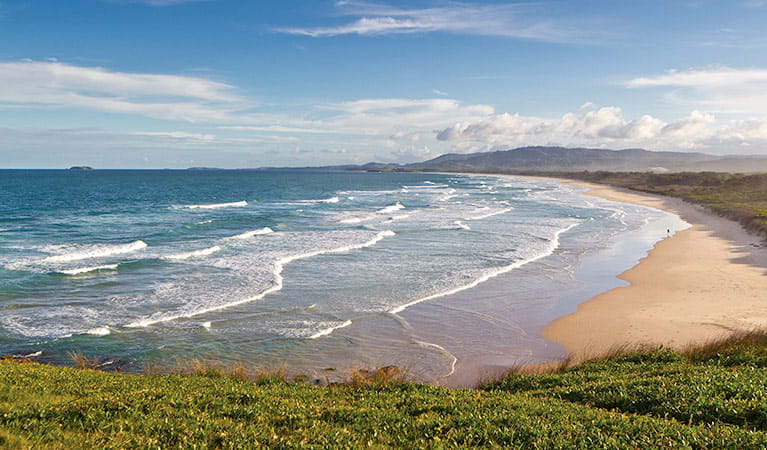Moonee Beach Nature Reserve
Overview
Looking for something to do in Coffs Harbour? Moonee Beach Nature Reserve offers walking, fishing, snorkelling, scuba diving and whale watching opportunities.
Read more about Moonee Beach Nature Reserve
At Moonee Beach Nature Reserve, the rare and unique thrive: endangered bats roost in seaside caves, pockets of coastal rainforest thrive and pandanus trees flourish. Threatened and uncommon plant communities grow on the exposed headlands of Bare Bluff and the confidently named Look At Me Now headland. This place of magnificent scenic views and glorious coastline is the traditional homeland of the Gumbaynggirr people who value Look At Me Now Headland as an important and powerful Aboriginal heritage site.
There’s more to make the most of in this gorgeous part of NSW. Bring along your fishing rod, surfboard, diving gear or snorkel for the ocean or more sheltered estuary, which is part of Solitary Islands Marine Park and ideal for kids. Moonee is also a great place for picnicking, hiking, canoeing, birdwatching and seasonal whale watching. Keep your binoculars out for spotting white-bellied sea eagles, ospreys and brahminy kites as they hunt along the coast.
Local alerts
For the latest updates on fires, closures and other alerts in this area, see https://www.nationalparks.nsw.gov.au/visit-a-park/parks/moonee-beach-nature-reserve/local-alerts
Contact
- in the North Coast region
Moonee Beach Nature Reserve is always open but may have to close at times due to poor weather or fire danger.
-
-
Coffs Harbour office
02 6652 0900
Contact hours: Monday to Friday, 8.30am to 4.30pm. - 4/32 Edgar St, Coffs Harbour NSW 2450
-
Email: npws.coffscoast@environment.nsw.gov.au
-
Coffs Harbour office
Visitor info
All the practical information you need to know about Moonee Beach Nature Reserve.
Map
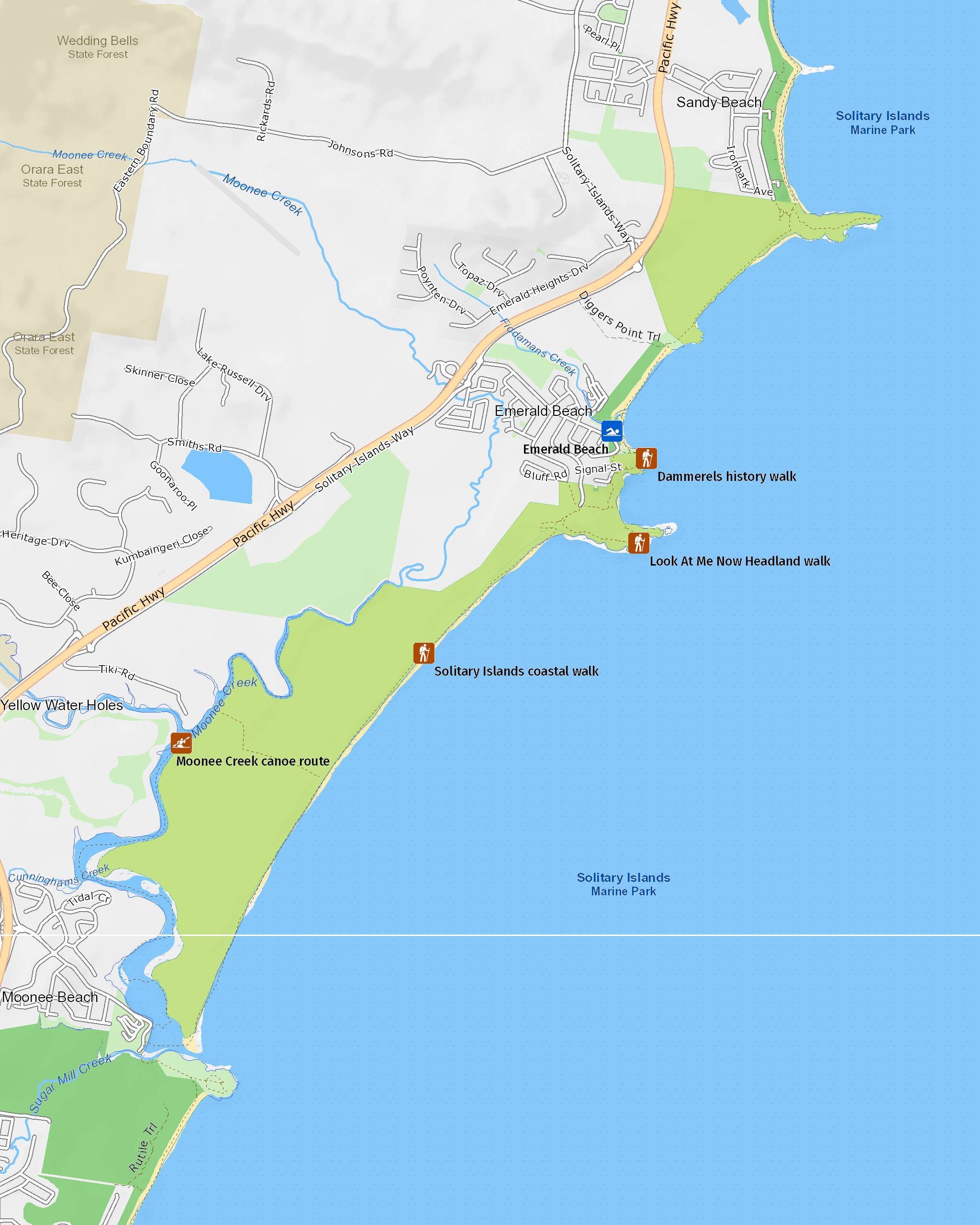
Map legend

Getting there and parking
Get driving directions
From Coffs Harbour:
- Travel north on Pacific Highway and take Emerald Beach exit to access the main tourist information
By bike
Check out the Bicycle information for NSW website for more information.
By public transport
For information about public transport options, visit the NSW country transport info website.
Best times to visit
There are lots of great things waiting for you in Moonee Beach Nature Reserve. Here are some of the highlights.
Spring
This is the tail end of whale watching season, but the beginning of the best time for birdwatching and wildflower displays.
Summer
Enjoy a dip in the ocean or a splash around in the estuary when the weather's at its hottest.
Winter
Whale migration begins in this season, and you'll find uninterrupted views of the ocean from beaches, headlands and walking tracks.
Weather, temperature and rainfall
Summer temperature
Average
18°C and 26°C
Highest recorded
43.3°C
Winter temperature
Average
7°C and 19°C
Lowest recorded
-3.2°C
Rainfall
Wettest month
March
Driest month
September
The area’s highest recorded rainfall in one day
781.9mm
Maps and downloads
Prohibited
Pets
Pets and domestic animals (other than certified assistance animals) are not permitted. Find out which regional parks allow dog walking and see the pets in parks policy for more information.
Smoking
NSW national parks are no smoking areas.
Nearby towns
Coffs Harbour (14 km)
Coffs Harbour is a coastal city on the North Coast, packed with things to do. It's surrounded by lush forests and national parks.
Woolgoolga (15 km)
Woolgoolga is a busy rural service town with a large Sikh population. It features a coastal setting surrounded by banana farms and forested hills.
Bellingen (48 km)
Bellingen is a laid-back, tree-lined town with a New Age vibe. It's set in a luxuriant valley beside the Bellinger River.
Learn more
Moonee Beach Nature Reserve is a special place. Here are just some of the reasons why:
This powerful place
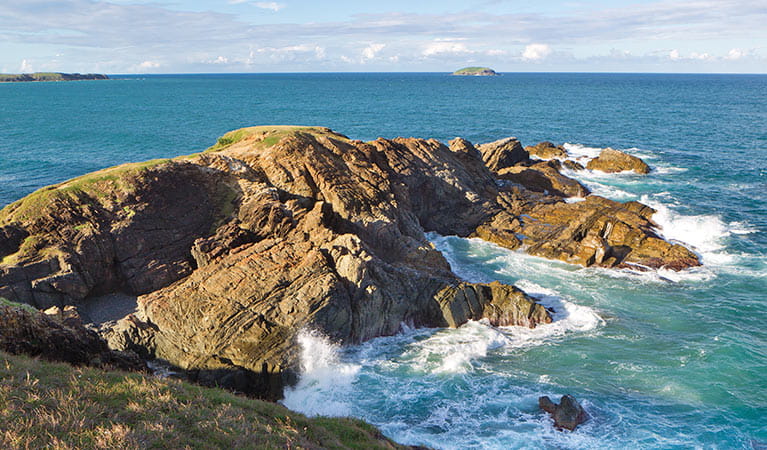
Look At Me Now Headland is significant to local Gumbaynggirr people as an important mythological site and a powerful place within their homeland. Evidence of everyday lives of Aboriginal heritage and its people remains in the form of middens, campsites, ceremonial sites and areas where stone axes were ground. The name Moonee comes from 'Munim-Munim', which is the Gumbaynggirr name for the area. It means 'rocky', reflecting the original importance of this place for axe-making.
- Look At Me Now Headland walk It’s an easy hike along Look At Me Now Headland walk, with scenic views all the way and a lookout over Moonee Beach. This is a great place for whale watching in winter and birdwatching in spring.
Settling in
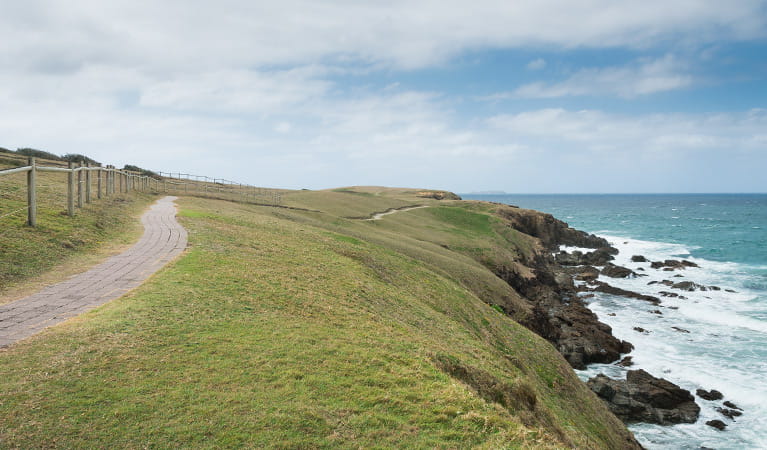
The 1880s were a big decade for newcomers to the area and the history is fascinating. From 1884, South Solitary Island signal station was operated by the Dammerel family. Only a couple of years into what would become a 40-year job, there was a collision at sea between Keilawarra and Helen Nicoll. Lone fossicker Frederick Fiddaman spent much of the 1880s searching for gold, and evidence of his toils can still be seen at Diggers Point. A century later, locals protested long and hard, successfully preventing the area becoming a site for sewage ocean outfall. Only in 1995 were Look At Me Now Headland, Diggers Point and Bare Bluff added to the reserve.
- Dammerels history walk Dammerels history walk is a short, easy stroll taking in historic sites, scenic views and the pioneering heritage of South Solitary Island. Whale watching and birdwatching is recommended.
Rare and threatened
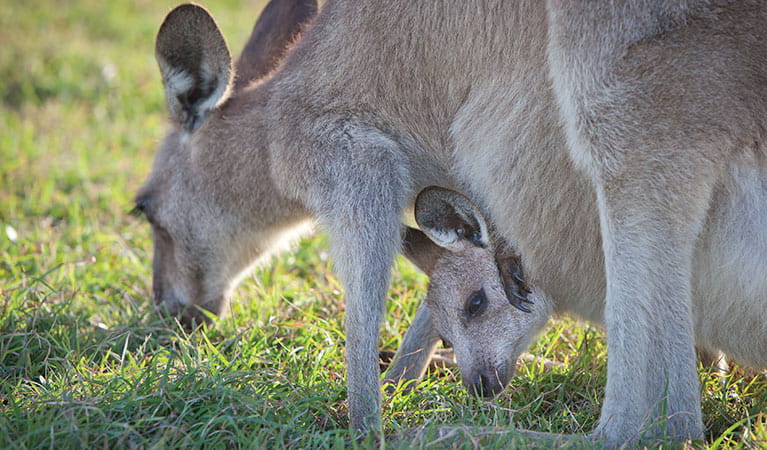
Little bent-winged bats roost in nursery caves on the headlands of Moonee Beach Nature Reserve. Producing only one offspring each year and being particularly vulnerable to disturbance by humans, they are, unsurprisingly, an endangered species. Eastern grey kangaroos are found throughout the reserve and swamp wallabies frequent the coastal rainforests and heathlands. 80 bird species are known, including 10 endangered species, such as sooty and pied oyster-catchers and black-necked storks. Five threatened plant species survive in the salt spray and shallow soil on the surface of the headlands. To the untrained eye these plant communities, hidden within the grass, don't look like much. But to a botanist they are EEC (ecologically endangered communities) and their plight probably keeps some of them awake at night.
- Look At Me Now Headland walk It’s an easy hike along Look At Me Now Headland walk, with scenic views all the way and a lookout over Moonee Beach. This is a great place for whale watching in winter and birdwatching in spring.
- Moonee Creek canoe route For those into kayaking, canoeing or fishing, Moonee Creek canoe route is the ideal alternative way to enjoy the reserve. This pristine estuary is at the southern end of Moonee Beach.
Plants and animals protected in this park
Animals
-
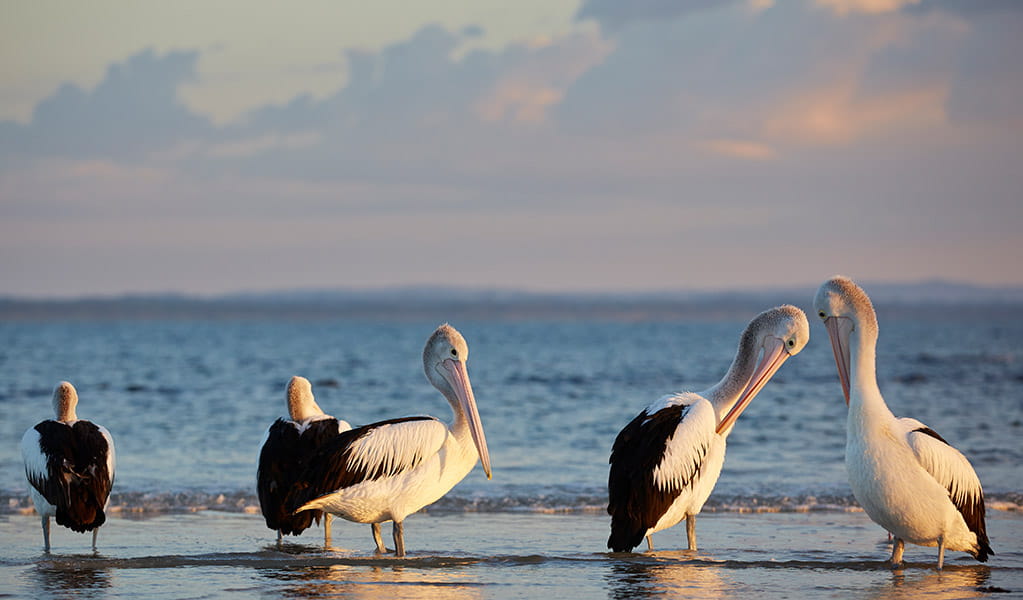
Australian pelican (Pelecanus conspicillatus)
The curious pelican is Australia’s largest flying bird and has the longest bill of any bird in the world. These Australian birds are found throughout Australian waterways and the pelican uses its throat pouch to trawl for fish. Pelicans breed all year round, congregating in large colonies on secluded beaches and islands.
Education resources (1)
What we're doing
Moonee Beach Nature Reserve has management strategies in place to protect and conserve the values of this park. Visit the OEH website for detailed park and fire management documents.

